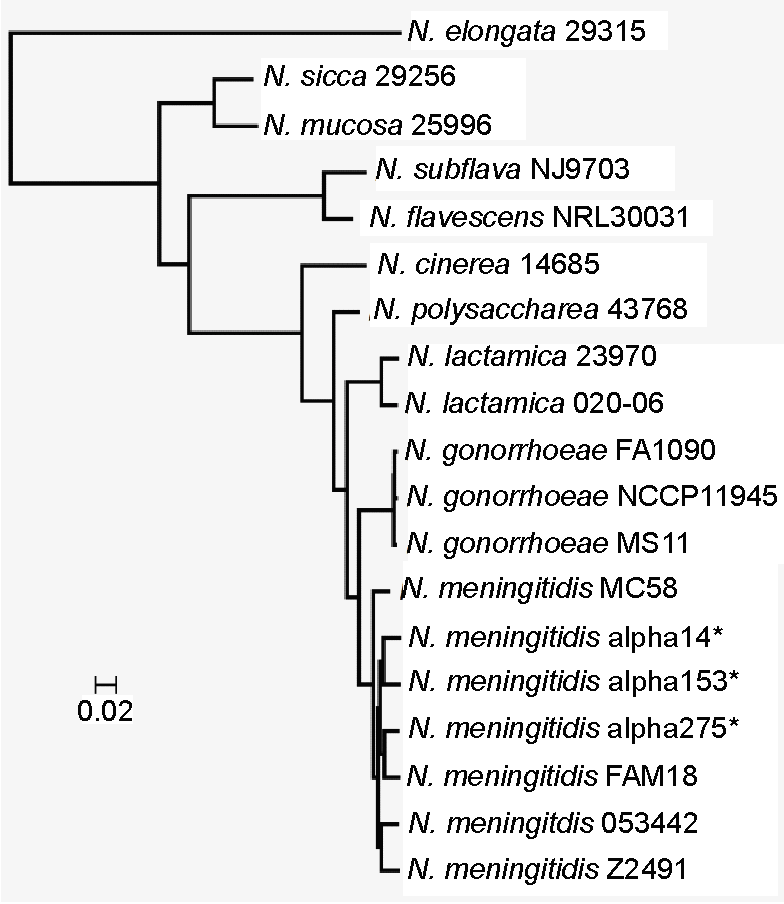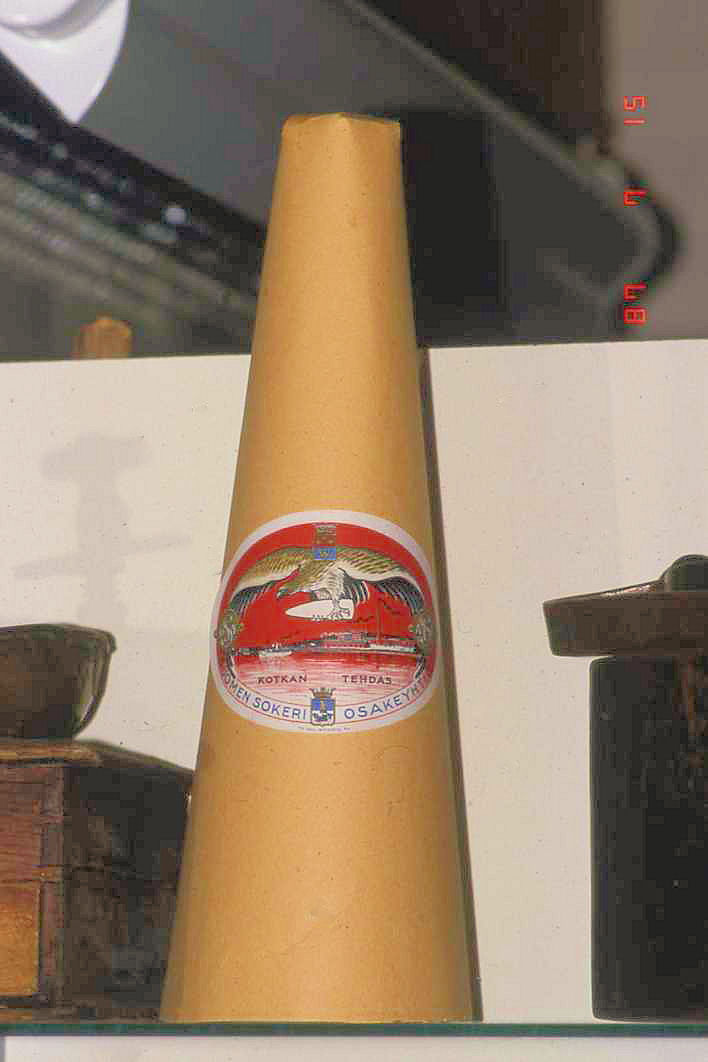|
Neisseria Mucosa
''Neisseria mucosa'' is a species of ''Neisseria''. It is notable among ''Neisseria'' for its ability to metabolize sucrose. It can cause endocarditis. While N. mucosa is a rather rare cause of endocarditis, cases of N. mucosa endocarditis have been reported along with symptoms such as painful finger nodules, fever, headache, and tremors. In certain cases, patients can become terminal from this strain of the infection but for those that survive, treatment of N. mucosa endocarditis usually takes around 6 weeks. See also * Cystine tryptic agar Cystine tryptic agar (CTA), also known as cystine trypticase agar, is a growth medium used for the identification of microorganisms. It can be used to determine if organisms can ferment various carbohydrates, including maltose, lactose, and sucrose ... References External linksType strain of ''Neisseria mucosa'' at Bac''Dive'' - the Bacterial Diversity Metadatabase Neisseriales {{Betaproteobacteria-stub ... [...More Info...] [...Related Items...] OR: [Wikipedia] [Google] [Baidu] |
Neisseria
''Neisseria'' is a large genus of bacteria that colonize the mucosal surfaces of many animals. Of the 11 species that colonize humans, only two are pathogens, ''N. meningitidis'' and '' N. gonorrhoeae''. ''Neisseria'' species are Gram-negative bacteria included among the Pseudomonadota, a large group of Gram-negative forms. ''Neisseria'' diplococci resemble coffee beans when viewed microscopically. Pathogenesis and classification Pathogens Species of this genus (family Neisseriaceae) of parasitic bacteria grow in pairs and occasionally tetrads, and thrive best at 98.6 °F (37 °C) in the animal body or serum media. The genus includes: * '' N. gonorrhoeae'' (also called the gonococcus) causes gonorrhea. * ''N. meningitidis'' (also called the meningococcus) is one of the most common causes of bacterial meningitis and the causative agent of meningococcal septicaemia. These two species have the ability of 'breaching' the barrier. Local cytokines of the area become sec ... [...More Info...] [...Related Items...] OR: [Wikipedia] [Google] [Baidu] |
Sucrose
Sucrose, a disaccharide, is a sugar composed of glucose and fructose subunits. It is produced naturally in plants and is the main constituent of white sugar. It has the molecular formula . For human consumption, sucrose is extracted and refined from either sugarcane or sugar beet. Sugar mills – typically located in tropical regions near where sugarcane is grown – crush the cane and produce raw sugar which is shipped to other factories for refining into pure sucrose. Sugar beet factories are located in temperate climates where the beet is grown, and process the beets directly into refined sugar. The sugar-refining process involves washing the raw sugar crystals before dissolving them into a sugar syrup which is filtered and then passed over carbon to remove any residual colour. The sugar syrup is then concentrated by boiling under a vacuum and crystallized as the final purification process to produce crystals of pure sucrose that are clear, odorless, and sweet ... [...More Info...] [...Related Items...] OR: [Wikipedia] [Google] [Baidu] |
Endocarditis
Endocarditis is an inflammation of the inner layer of the heart, the endocardium. It usually involves the heart valves. Other structures that may be involved include the interventricular septum, the chordae tendineae, the mural endocardium, or the surfaces of intracardiac devices. Endocarditis is characterized by lesions, known as ''Vegetation (pathology), vegetations'', which is a mass of platelets, fibrin, microcolony, microcolonies of microorganisms, and scant inflammatory cells. In the subacute form of infective endocarditis, the vegetation may also include a center of granuloma, granulomatous tissue, which may fibrose or calcify. There are several ways to classify endocarditis. The simplest classification is based on cause: either ''infective'' or ''non-infective'', depending on whether a microorganism is the source of the inflammation or not. Regardless, the diagnosis of endocarditis is based on clinical features, investigations such as an echocardiogram, and blood cultures d ... [...More Info...] [...Related Items...] OR: [Wikipedia] [Google] [Baidu] |
Nodule (medicine)
In medicine, nodules are small firm lumps, usually greater than 1 cm in diameter. If filled with fluid they are referred to as cysts. Smaller (less than 0.5 cm) raised soft tissue bumps may be termed papules. The evaluation of a skin nodule includes a description of its appearance, its location, how it feels to touch and any associated symptoms which may give clues to an underlying medical condition. Nodules in skin include dermatofibroma and pyogenic granuloma. Nodules may form on tendons and muscles in response to injury, and are frequently found on vocal cords. They may occur in organs such as the lung, or thyroid, or be a sign in other medical conditions such as rheumatoid arthritis. Characteristics Nodules are small firm lumps usually greater than 1 cm in diameter, found in skin and other organs. If filled with fluid they are usually softer and referred to as cysts. Smaller (less than 0.5 cm) raised soft tissue bumps may be termed papules. Evaluation The evaluation ... [...More Info...] [...Related Items...] OR: [Wikipedia] [Google] [Baidu] |
Cystine Tryptic Agar
Cystine tryptic agar (CTA), also known as cystine trypticase agar, is a growth medium used for the identification of microorganisms. It can be used to determine if organisms can ferment various carbohydrates, including maltose, lactose, and sucrose. This approach can be used to type organisms because although strains quickly gain antibiotic resistance, they rarely gain the ability to metabolize new nutrients (though exceptions are known.) For example, the following fermentation patterns have been observed: Typical composition Cystine tryptic agar typically contains ( w/v):Becton, Dickinson and Company CTA Medium 2005. *2.0 % casein *0.05 % L-cystine *0.5 % sodium chloride *0.05% sodium sulfite *0.25% agar *0.00017% phenol red *0.5% one of the sugars mentioned above See also * TSI slant 250px, TSI agar slant results: (from left) preinoculated (as control), ''P. aeruginosa'', ''E. coli'', '' Shigella_flexneri.html" ;"title="Salmonella Typhimurium'', ''Shigella flexneri">Sa ... [...More Info...] [...Related Items...] OR: [Wikipedia] [Google] [Baidu] |

